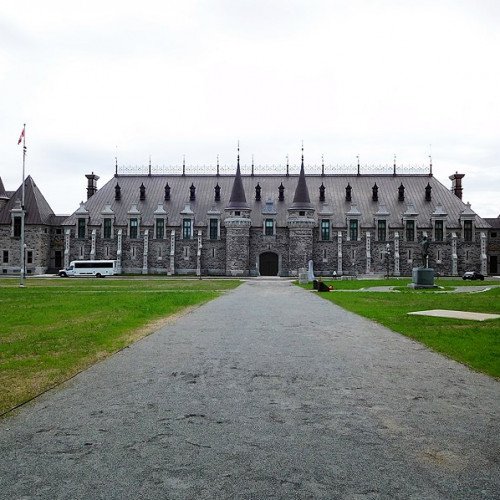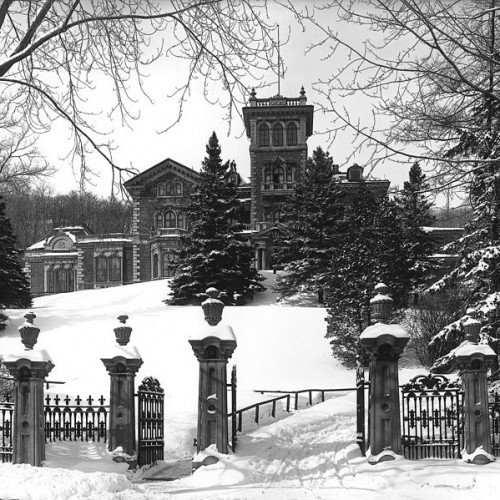Castles of "Canada" QUEBEC CITY ARMOURY vs RAVENSCRAG

QUEBEC CITY ARMOURY
The Voltigeurs de Québec Armoury, formerly Grande-Allée Armoury (French: Manège militaire Grande-Allée, or simply Manège militaire), was built as a Gothic Revival drill hall for the infantry regiment Les Voltigeurs de Québec in Quebec City, Quebec, Canada. Designed by architect Eugène-Étienne Taché and constructed between 1885 and 1888, it is a National Historic Site. Partially destroyed by fire in 2008, the armoury was then rebuilt and reopened on May 2018. The Voltigeurs de Québec Armoury was severely damaged by a fire on April 4, 2008. All but a rear wall and turrets beside the front door were burned. Les Voltigeurs de Québec Museum in the amoury which housed various artifacts from the regiment was also lost in the fire. However, officials estimate that 90 percent of the artifacts were saved due to the efforts of members of the regiment and local firefighters. The armoury was to have been one of the venues for the celebration of Quebec's 400th birthday. The armoury's wooden roof was one of the largest of its kind in Canada. Calls were made by politicians to rebuild the armoury, to which the federal government responded in April 2008 positively by allocating $2 million for reconstruction planning. In the fall of 2008, the regimental association launched a lawsuit against the Department of National Defence, blaming negligence on the part of the federal government for the blaze. In 2010, Intergovernmental Affairs Minister Josée Verner announced federal plans to rebuild the armoury by 2016.
Statistics for this Xoptio

RAVENSCRAG
Ravenscrag is a former mansion that was built between 1860 and 1863 for Hugh Allan (later Sir Hugh Allan) in the Golden Square Mile of Montreal, Quebec. It stands at 1025 Pine Avenue West at the top of McTavish Street, on the slopes of Mount Royal. Upon its completion in 1863, the mansion of 72 rooms excelled "in size and cost any dwelling-house in Canada," exceeding Dundurn Castle, built by Sir Allan MacNab in 1835. In 1940, Allan's second son, Sir Montagu Allan, donated the property to the Royal Victoria Hospital for use as a medical facility, when its famously sumptuous interior was completely stripped and gutted. Today, the building is known as the Allan Memorial Institute and is part of the McGill University Faculty of Medicine. Although reduced in size and lacking its former grandeur, Ravenscrag continues to dominate what remains of the Golden Square Mile today. In 1860, Allan purchased fourteen acres on the slopes of Mount Royal for $10,000, from the estate of the late Simon McTavish. The property was then considered to be in the countryside and was outside the confines of Montreal. He commissioned the Liverpool-born architects, Victor Roy and John W. Hopkins of the firm William & Wily, to design and build a mansion on the land. By 1863, Hopkins and Roy had completed Allan's residence in the style of an Italian Renaissance villa or palazzo, made popular in England since the construction of Osborne House for Queen Victoria and Prince Albert in 1851. Allan named his new residence after one of his favourite childhood haunts, the ruins of Ravenscraig Castle in East Ayrshire. As Allan intended, from the outside Ravenscrag was both imposing and intimidating. It had a 300-foot frontage and a gate lodge at the end of the drive that now filters out onto Pine Avenue. The view from the house looked over Old Montreal, across the Saint Lawrence River and over to the Green Mountains of Vermont. From the 75-foot tower rising over the house, Allan could occasionally be glimpsed with a brass telescope in hand scanning Longue-Pointe for the safe arrival of the weekly Allan Line Steamer arriving from Glasgow.